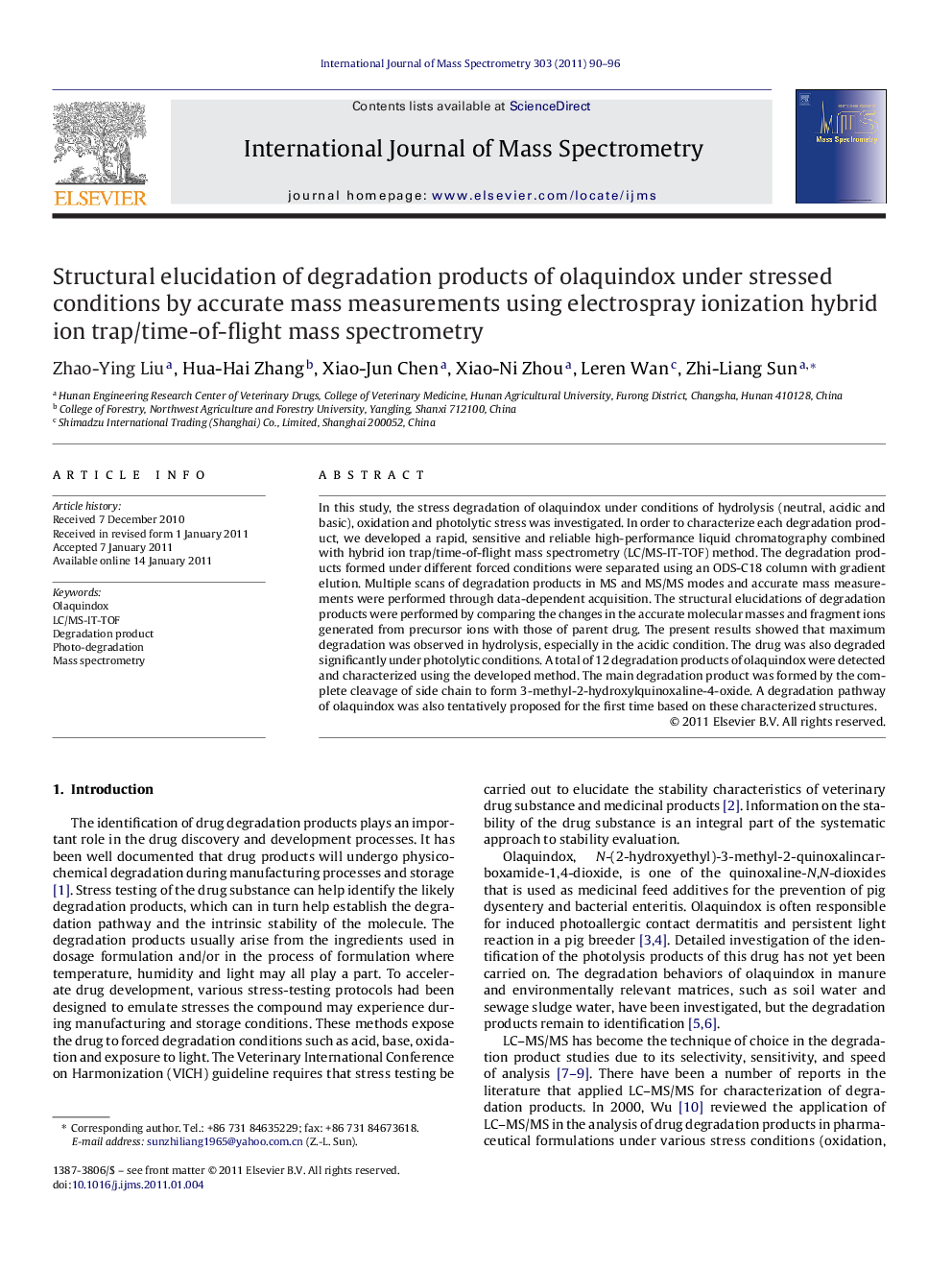| Article ID | Journal | Published Year | Pages | File Type |
|---|---|---|---|---|
| 1194403 | International Journal of Mass Spectrometry | 2011 | 7 Pages |
In this study, the stress degradation of olaquindox under conditions of hydrolysis (neutral, acidic and basic), oxidation and photolytic stress was investigated. In order to characterize each degradation product, we developed a rapid, sensitive and reliable high-performance liquid chromatography combined with hybrid ion trap/time-of-flight mass spectrometry (LC/MS-IT-TOF) method. The degradation products formed under different forced conditions were separated using an ODS-C18 column with gradient elution. Multiple scans of degradation products in MS and MS/MS modes and accurate mass measurements were performed through data-dependent acquisition. The structural elucidations of degradation products were performed by comparing the changes in the accurate molecular masses and fragment ions generated from precursor ions with those of parent drug. The present results showed that maximum degradation was observed in hydrolysis, especially in the acidic condition. The drug was also degraded significantly under photolytic conditions. A total of 12 degradation products of olaquindox were detected and characterized using the developed method. The main degradation product was formed by the complete cleavage of side chain to form 3-methyl-2-hydroxylquinoxaline-4-oxide. A degradation pathway of olaquindox was also tentatively proposed for the first time based on these characterized structures.
Graphical abstractFigure optionsDownload full-size imageDownload high-quality image (122 K)Download as PowerPoint slideResearch highlights► The stress degradation of olaquindox is investigated by LC/MS-IT-TOF. ► A total of 12 degradation products are characterized. ► A comprehensive degradation pathway of olaquindox is tentatively outlined. ► The use of LC/MS-IT-TOF approach appears to be rapid and efficient in structural identification.
